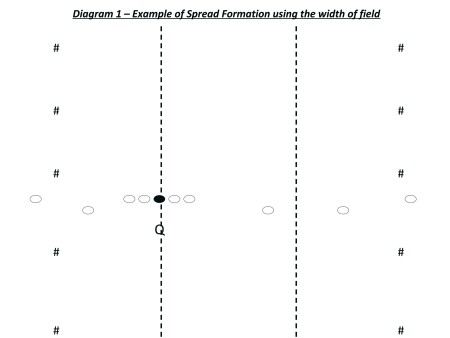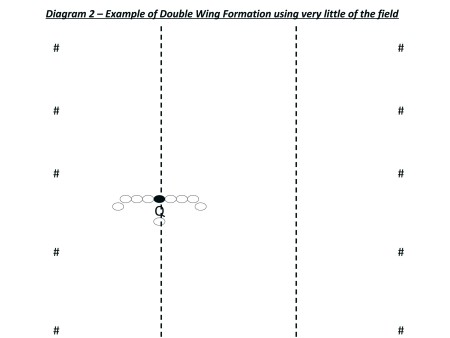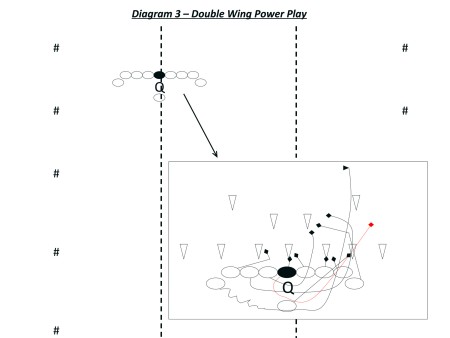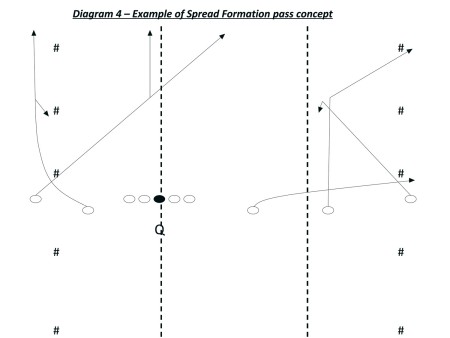Article CategoriesAFM Magazine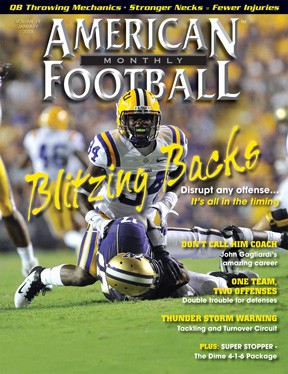
|
One Team – Two Offenses© More from this issueBy Jeff Hancock • Offensive Coordinator • Siena Heights University Two years ago the Board of Trustees voted to start football at Siena Heights University and we were fortunate enough to be a part of the very first staff. Among the overwhelming number of things that go into starting a new program was this question because of our limited senior leadership – how were we going to recruit enough players to field a team when we have made the decision to focus primarily on high school seniors that were captains? Before we can explain how we did this, we first need to explain why we decided on running two offenses. We also wanted to be able to be competitive with our opponents during our very first season. If nothing else, having two different offenses would force opposing defenses to spend practice time learning two sets of defensive keys as opposed to one strategy. Finally, we would get more players involved by having and using two completely different groups of players. This gave us the ability to recruit more kids that were captains and allowed us to recruit the “non-traditional” height and size you would look for in a certain position. The final consensus was, “why not?” If ever there was a time to experiment with something like this, it’s while starting a brand new program. Most importantly, the head coach was all for it and gave his stamp of approval on our new project. Our base offense is a spread, zone running, multiple personnel group, drop back passing unit that uses the entire width of the field (Diagram 1).
Diagram 1. What is the complete opposite of this? The double wing. We were able to bring on an assistant to help with the double wing, or as they would eventually be called, “The X Unit”. Now we had our two different offenses in place – one that spreads the field and one that compresses it tremendously (Diagram 2).
Diagram 2. The next step was the recruiting of players specifically for either offense. This expanded the field of potential prospects well beyond the norm which, in turn, allowed us to bring in enough kids to field a team. The next hurdle was the practice planning and organization of two offenses and one defense. One of our many issues that first fall camp was finding enough space to practice while the stadium was being completed. A great asset of the double wing offense was that it didn’t need much of a practice area. For example, the base play (power) can be practiced within 8 yards of space (Diagram 3).
Diagram 3. One coach had the “X” offensive line and the other coach worked with the “X” skill players all in about a 10 yard x 20 yard area. The spread offense needed the most area with so many different skill positions. The two offenses stayed apart for a good portion of fall camp, each working on refining their own set of skills. Eventually, when both offenses got together, it was to primarily work on the exchanges of one unit coming off the field and one unit running on. Since the spread was a no-huddle offense and the “X” was a huddling group, working these exchanges “on air” was very important in the beginning. The toughest part of the practice planning was when and where the scout defensive players would spend their time working because there weren’t enough to have two complete sets of these groups. Some serious sharing was needed in this area. The final and most important aspect was the game day planning and execution. The game plan every week was to work a lot of exchanges during the course of the game to create confusion on the defensive side. For example, defending a four wide receiver formation that releases five and throws (Diagram 4) on one play and then defending power running out of the double wing on the next play is a tremendous amount of conflict for a defense.
Diagram 4. The biggest factor in determining which offense would be on the field was down and distance. If it was third and long, chances were that we would get the spread offense out to run a pass play. If it was fourth and short, we would probably have the “X” offense out on the field. We also changed which group started a series as well. This was a process that took a while for the offensive coordinator to get used to. Having two offenses and making the decision after each play as to who was going on the field for the next play took some major adjustments. As the season went along, this process went smoother and smoother. The sideline procedure was that the “X” personnel always stayed near their coordinator and the spread personnel always stayed by the coach that signaled the plays in. Both coaches were on headphones with the offensive coordinator who was upstairs in the press box. As you can imagine, by running two completely different offenses we caused confusion for many of the defenses we faced. The fun part for us was to get both groups out in the first series to see how a defense had decided to prepare to play us. We saw a lot of different answers from defenses - from not changing anything to bringing in a new set of players when we did. We would generally decide which offense was going to play more that day based on how the defense answered our shifts. Having two offenses gave us much better depth for special teams by having more kids to draw from. It also minimized conditioning time (our conditioning was generally working rapid exchanges at a quick pace during practice) and allowed each offense to work on specific “down and distance situations”. For example, with our spread offense, we never really spent any practice time working on short yardage plays and with the Double Wing, we never really needed to work on any third and long plays. Probably the biggest positive to running two offenses was that if one was having a bad day and not moving the ball, we would just play the other one. How many offensive coordinators would have liked to have that option at some point in their career? To help avoid any conflict between the two offenses, presentation is the key. Always talk in terms of “we” and not “us or them” when addressing the players. This is something that was a little difficult for the coaches because no one had ever had two offenses on one team. Always let the players know up front that both are equally important, both will help us win games, and both will help each other out at certain times of a game when one or the other is struggling. Lastly, we would be lying if we told you that there weren’t any growing pains and disagreements. In spite of all that, it was a very successful endeavor when you consider we went 8-1 in our first season, brought in over 100 student-athletes (retaining over 80 heading into 2012), and averaged over 38 points and 417 yards of offense per game. The positives far outweighed the few negatives we faced. If we could continue doing this without worry of exceeding NAIA scholarship limitations and travel roster sizes, we would without hesitation. Because of these limitations, we primarily ran the spread offense this season but incorporated elements of the double wing. |
|
| HOME |
MAGAZINE |
SUBSCRIBE | ONLINE COLUMNISTS | COACHING VIDEOS |
Copyright 2024, AmericanFootballMonthly.com
All Rights Reserved


